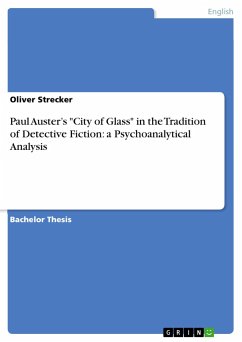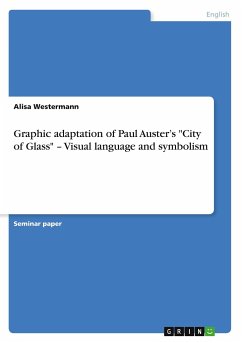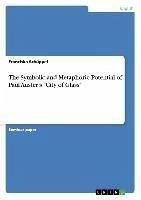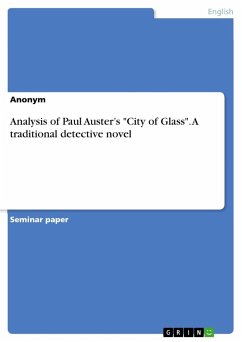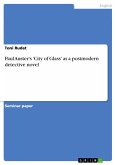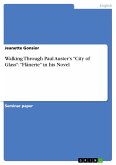Bachelor Thesis from the year 2012 in the subject English Language and Literature Studies - Literature, grade: 1,0, University of Dusseldorf "Heinrich Heine" (Philosophische Fakultät), language: English, abstract: The topic of this paper is to examine the detective novel City of Glass, published by Paul Auster in 1985, from a psychoanalytical point of view. This analytic approach, combining both detective fiction and psychoanalysis, is more natural than might appear at first glance. After all, the modus operandi of the psychoanalyst and the detective are quite similar. A close contemplation of details, a search for hints and finally a development of a theory that unites the small signs in a big picture are crucial steps in both fields. Sigmund Freud laid out the common importance of details as following: And if you were a detective engaged in tracing a murder, would you expect to find that the murderer had left his photograph behind at the place of the crime, with his address attached? Or would you not necessarily have to be satisfied with comparatively slight and obscure traces of the person you were in search of? So do not let us underestimate small indications, by their help we may succeed in getting on the track of something bigger. Furthermore, Freud emphasized how psychoanalysts are practicing a kind of detective-work as well: "We have to uncover psychic material; and in order to do this we have invented a number of detective devices." Due to those parallels, "psychological studies of mystery and detective narratives have a long and varied history." Most of these approaches have analyzed traditional detective fiction. Auster's very untraditional detective novel, however, plays with the conventions of the genre and creates its very own detective universe, a confusing play of constantly changing identities. This universe shows parallels to the world-view of the French psychoanalyst Jaques Lacan, as: Lacanian psychoanalysis offers a theory of the subject that does without concepts such as unity, origin, continuity. It goes from the assumption of a fundamentally split subject and thus comes up with a model of subjectivity that grounds itself on a constitutive lack rather that wholeness. These parallels are not a pure coincidence as Auster is familiar with Lacan's work and quotes themes of Lacanian psychoanalysis. Also, Lacan himself applied his theories to detective fiction, such as The Purloined Letter by Edgar Allen Poe. In this work, the central question that shall be the focus of investigation is: From a psychoanalytical point of view - how does Paul Auster position his main character Daniel Quinn in the context of traditional detective novels?(...)
Hinweis: Dieser Artikel kann nur an eine deutsche Lieferadresse ausgeliefert werden.
Hinweis: Dieser Artikel kann nur an eine deutsche Lieferadresse ausgeliefert werden.

